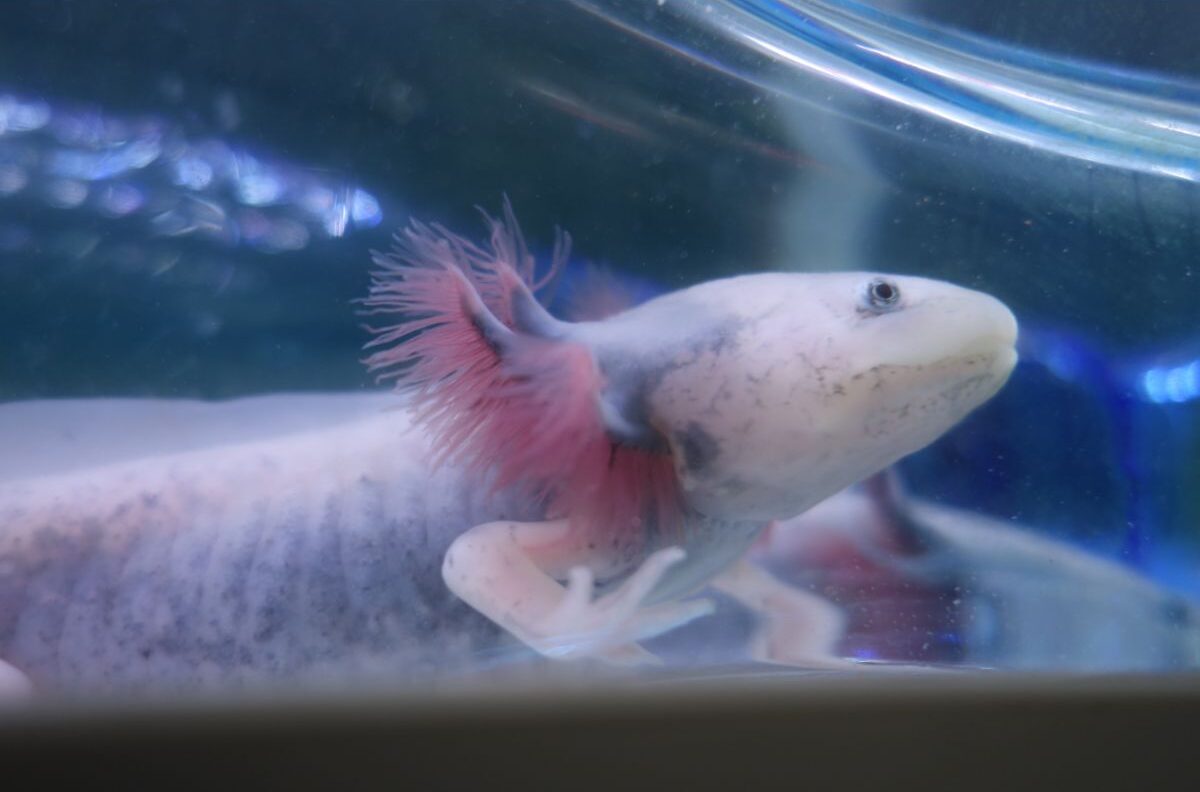There are some animals that have the ability to regrow parts of their body, but among amphibians the axolotl is an extreme case with its regeneration abilities. It can regenerate its limbs as well as parts of complex organs like eyes, heart, brain and gill branches.
What body party can an axolotl regenerate?
Axolotls can regenerate almost all parts of their body, in addition to their limbs and gill branches, parts of their eyes, heart, lungs, ovaries, spinal cord, and even parts of their brain. They even can regrow parts of their heart ventricles in 30 to 60 days. And in the process, the axolotl’s wounds also heal without forming scars.
Can axolotls regrow their brain and head?
Axolotls can regenerate up to one-third of the front part of the brain, the telencephalon. But even axolotls cannot regrow a severely damaged brain or their entire head.
What is the process of limb regeneration?
After the axolotl loses its leg, the platelets clot together to stop the bleeding. Then a layer of cells, the wound epidermis, grows to cover the wound and a blastema forms. It is believed that surrounding bone, cartilage or muscle cells develop into blastema cells. A blastema cell that used to be a muscle cell can form other muscle cells, but not completely different cells such as bone or cartilage cells.
The blastemal cells divide and gradually form a copy of the lost leg.
The exact mechanisms of how the axolotl manages to regenerate so many parts of its body are still being researched. In the process, the genome of the species is also being sequenced, which is about ten times larger than that of a human and thus belongs to one of the largest animal genomes sequenced to date.
How long does it take for an axolotl to regrow limbs?
It takes between 40 and 50 days for a young axolotl to fully regrow a leg. Axolotls can regenerate their limbs up to 5 times, after which they usually do not grow back. The older an axolotl gets, the worse its ability to regenerate gets.
What should be done if my axolotl is injured?
Injuries to an axolotl usually come from other axolotls or fish if you keep them together. Especially young Axolotls tend to cannibalistic behavior and nibble or bite at the legs or gill branches of their tank mates. The probability of axolotls hurting each other can be reduced by making sure that they have enough hiding places and space in the aquarium.
If the axolotl has wounds or one of its limbs or gill branches has been bitten off, this wound will usually heal without problems and the limb will regrow as long as the injury does not become infected.
In such a case, it is best to keep the injured axolotl separately from the others so that it can recover in peace and isn’t stressed. Make sure that the water is clean so that the wound does not become infected. Temperatures should also be kept as cool, as this is the best way for the Axolotl to regenerate.

What animals have even greater regenerative abilities than axolotls?
Perhaps it is hard to imagine, but there are actually animals that can regenerate even more parts of their body than the axolotl.
These include zebrafish, flatworms, and hydras. Adult zebrafish can regenerate complex organs similar to axolotls, including parts of the brain, heart and kidneys. They can also regrow areas of the spinal cord, retina and all of their fins.
Some flatworms go one step further. They can be cut into more than 200 small pieces, and each piece grows back into a completely new worm.
Hydras (freshwater polyps), on the other hand, can replace damaged nerve cells, which is a unique ability not found in any other animal so far, and they also do not form scar tissue when regenerating other parts of their body.
Another peculiarity of freshwater polyps is that their probability of dying does not increase with age, since hydras do not seem to age, it could be that they can live up to 1400 years or much older.
Conclusion
The regeneration abilities of axolotls are truly amazing and if we can regrow a lost arm or organ in the distant future, then we have the axolotls to thank for. Besides researching how to heal spinal cord injuries, the axolotl can also help in cancer research, as they are very cancer resistant animals. So it remains exciting what we can learn from the axolotl.
If you want to know if axolotls are fish or amphibians, then you can read this article.

